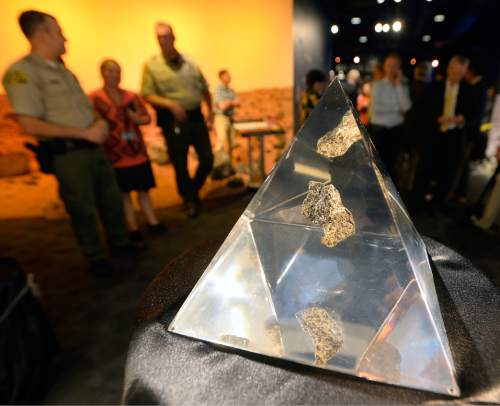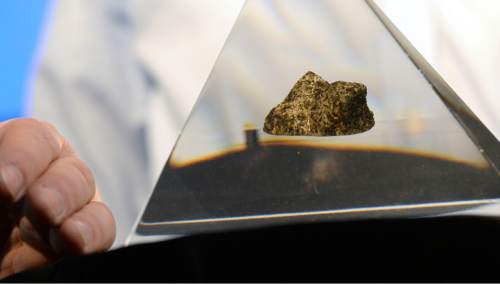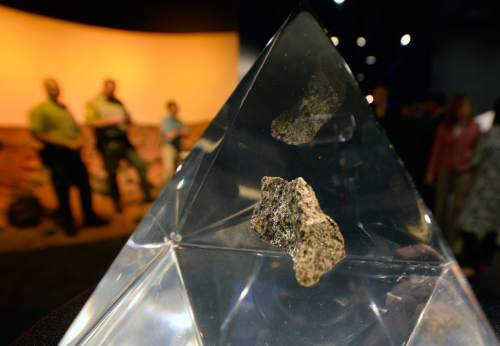This is an archived article that was published on sltrib.com in 2016, and information in the article may be outdated. It is provided only for personal research purposes and may not be reprinted.
One of Utah's most precious objects received royal treatment Friday as the Clark Planetarium's apricot-size moon rock was wrapped in a cloth, locked in a protective case and taken by armed guards to a bank in downtown Salt Lake City.
The rare extraterrestrial matter will sit in the vault for nearly five months while the planetarium remodels its exhibit space. The tear-out begins Monday, said Seth Jarvis, the planetarium's director.
But first, the moon rock — which has been on permanent loan to the planetarium from NASA since 1975 — had to go into lunar lockdown; and that entailed more than just sticking it in a cardboard box.
NASA requires that the moon rock be accompanied by armed guard any time it is out of its protective case, said Jarvis, who couldn't place a dollar value on the rock, except to say, "You'd have to figure out what it would cost to get a replacement."
The original probably cost billions. Between 1969 and 1972, six Apollo missions brought back 842 pounds of lunar rocks, core samples, pebbles, sand and dust from the moon's surface. Most of the collection sits in research facilities around the country, but because the rocks technically belong to U.S. citizens, NASA shared a few pieces with the public.
"We are unique in that we are one of the few public museums to have a moon rock on permanent loan," said Lindsie Smith, the planetarium's associate director, who donned white gloves to move the moon rock into its protective box.
The modernization of the planetarium exhibits is expected to take several months, with a grand opening planned for late October. Movies and star shows will remain open during the work.
The moon rock — which has been on display in a protective pyramid on the planetarium's upper floor — will move into a more prominent spot on the first floor and will be part of a new "Restless Planet" exhibit that takes a look at the dynamics between Earth and the moon.
Utah's moon rock was part of a larger piece collected on Aug. 1, 1971, by members of the Apollo 15 mission, said Jarvis. The rock, officially designated Lunar Sample 15555,464, is nicknamed "Great Scott" in reference to its collector, astronaut Dave Scott. While made of basalt, a common igneous rock, it has been exposed to billions of years of cosmic radiation, making it unlike any found on Earth.
Salt Lake County Mayor Ben McAdams — escorted by two Salt Lake County sheriff's deputies — ensured that the moon rock made it safely to the main branch of Zions Bank at 1 S. Main.
"I remember being a kid and seeing this rock [at the old Hansen Planetarium] and being inspired," he said. "It really is a gem for us to protect and the crown jewel of the planetarium."









